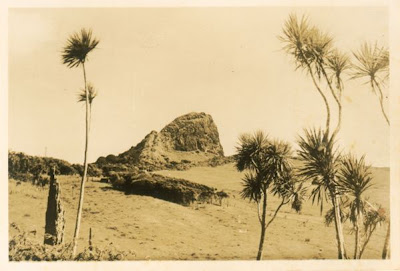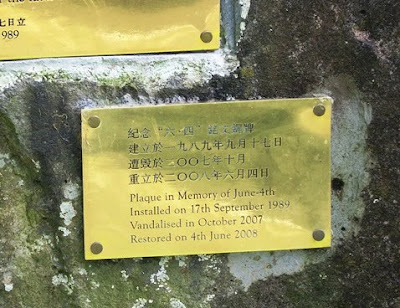Following on from my earlier post, Phil Hanson has sent the following this morning via email. He found the image originally on the Aerohub site.
Despite the Depression, grass-roots commercial aviation blossomed during the early 1930s with small companies using a wide variety of (usually British) light aircraft.
Jim Hewett was one who saw an opportunity. He left the Goodwin Chichester Aviation Company of Wellington, where he had been a pilot with some other notable pioneers including George Bolt, and in September 1929 set up Falcon Airways Ltd, using a DH60G Moth that had been first registered four months earlier as ZK-AAR. He flew mostly from a hilly ridge at Orakei Heights. This was the location quoted in The History of Aviation in New Zealand, by MacPherson and Ewing (Heinemann, 1986), rather than the more general “Orakei” of some other references.
Leo White noted in his book Wingspread (published in 1941 by the Unity Press) that Hewett was “one of the old school and a pilot who had been decorated for gallantry during World War I, [and] he knew the ‘tricks of the trade’ flying over cliff tops to gain advantage of uplifting air currents. He made a non-stop flight from Dunedin to Auckland in 10 hours, fitting an extra tank to his Moth.”
Although dismissed by White in a sentence, this was quite a flight. MacPherson and Ewing wrote: “In February 1930, in order to promote his services and establish aviation as a fast, efficient means of travel, Jim Hewett flew nonstop between Dunedin and Auckland. Departing at 6:40am on 15 March he touched down at Mangere at 4:40pm, taking ten hours to cover a route that took him over the four main centres. This broke the previous long-distance record for a day’s flight – established over eight years earlier by Bert Mercer in the ‘Creamota’ DH9 – extending the distance by 190km.”
It certainly seems that Hewett had little time to sit around during his Falcon Airways days. Leo White noted: “Jim seemed to be always in the air. If some anxious watcher rang the nearest aerodrome to say a yellow Moth was being buffeted by foul weather or that a machine was flying in the dark, nobody was unduly concerned. ‘That’s Jim Hewett,’ they’d say.
“Arriving over Auckland in the dark Jim used to shine a torch over the side to find the power lines near the aerodrome, and land without effort.”
Falcon Airways took on a wide range of work, from the inevitable joyriding to air taxi and other charter activities. Wingspread records one of the more unusual assignments: “Falcon Airways took part in clearing up a murder mystery. Jim flew detectives on their investigations in the Waikato and saved the limbs of the law considerable time on an aerial search.” Unfortunately, he did not name the investigation.
Hewett closed Falcon Airways when he went on to a greater adventure, flying the de Havilland DH89 Dragon Rapide (aka Dragon Six) ‘Tainui’ in the air race celebrating Melbourne’s Centenary. ZK-AAR, meanwhile, went on to enjoy quite a long life, going next to the Canterbury Aero Club, then back to Auckland to the de Havilland agent, Air Survey and Transport, which shared the military airfield at Hobsonville. It was taken over by the RNZAF in October 1939 and became and instructional airframe at Rongotai, where it was presumably broken up. Had it survived the war, it would have been considered too old and of too little use to rehabilitate to the civil register.
The DH89, ZK-ACO, had been purchased with funds from a special Art Union lottery and was one of two New Zealand entrants to participate in the 1934 MacRobertson Centenary Air Race from London (actually Mildenhall, to the north) to Melbourne, a distance of between 11,300 and 12,323 miles, depending on which contemporary report you read! In fact, four aircraft were entered from New Zealand but two never arrived at the starting line. Another was crewed by Aucklander Harold Gilman, who was serving in the RAF, but his Fairey Fox crashed during an emergency landing in southern Italy, killing both occupants.
Hewett’s experience qualified him well to fly the aircraft, accompanied by Cyril Kay as navigator and Frank Stewart as radio operator, although the latter was also a well-known Auckland photographer.
The other Kiwi aircraft competing for a £10,000 cash prize and gold cup was from the Manawatu and wore the province’s name. It was a single-engined low-wing Miles Hawk two-seater flown by the hugely experienced and well known Malcolm (Mac) McGregor and H C “Johnny” Walker. The contest was in two sections, speed and handicap, and both aircraft were entered into the latter.
The de Havilland finally arrived at Melbourne after a flying time of 106 hours 51 minutes, but although it beat the Hawk’s 118 hours it was, on handicap, assigned fifth place to the Manawatu entry’s fourth. The achievement can partly be gauged by the fact that 10 aircraft failed to finish and another 24 failed to even start. There’s a good account of the race from a New Zealand perspective in the book, Mac’s Memoirs by G H Cunningham (Reed, 1937).
As a postscript, the best-known connection with aviation and the general Orakei area was the New Zealand Flying School at Mission Bay, established to train pilots for the First world War, and was the former owner of the supposed “aircraft in the tunnels” at North Head that have intrigued historians and archaeologists for years. The flying school also owned the first two aircraft ever built by Boeing.
There’s another more contemporary aviation connection. In 1961-62, a TEAL executive, G N Wells, actively promoted the development of an airfield at Bastion Point – possibly an outrageous suggestion in the light of what was to transpire there a few years later, but regarded as “forward thinking” at the time. Wells owned a two-seat Ercoupe that had been flown from Europe to New Zealand some years earlier and envisaged an “airpark” for light aircraft. His cause was championed by Leo White and received fairly widespread press coverage.










































.jpg)

.jpg)










